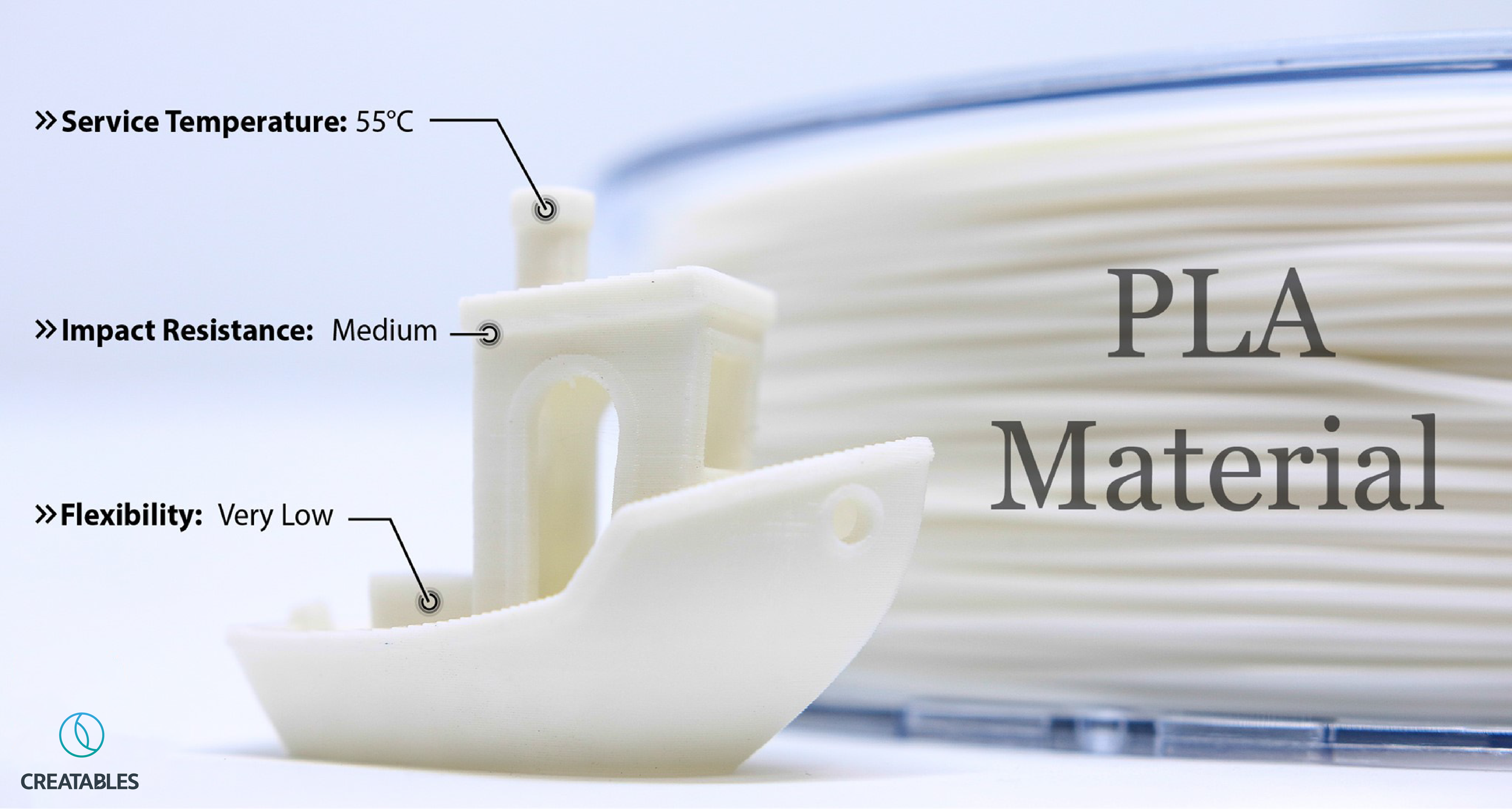3D Printing Materials
When it comes to 3D printing, there are many different types of materials. Selecting the appropriate material is essential as it directly affects the functionality, quality, and durability of the 3D-printed parts.
In this article, we will discover the most popular FDM-3D printing materials that we use at “Creatables 3D”
(a 3D printing service provider in Egypt).
PLA
Main Characteristics:
- Low service temperature, can’t withstand temperatures higher than 55°C
- Low flexibility and impact resistance
Applications:
- Props and prototypes
- Architecture maquettes, toys, figurines, and mock-ups
(used when visual quality is important and temperature resistance is not required)
ABS
Main Characteristics:
- High service temperature, meaning it can withstand temperatures up to 95°C
- Moderate flexibility and high impact resistance
Applications:
- Mechanical parts that will undergo high stresses and impacts
(e.g. gears, electronics enclosures, etc.)
- Any parts where temperature resistance is more important than visual quality (e.g. motor brackets, functional car parts, etc.)
PETG
Main Characteristics:
- High service temperature, meaning it can withstand temperatures up to 80°C
- Moderate flexibility and high impact and fatigue resistance
- High UV resistance, meaning it can be exposed to the sun
Applications:
- Mechanical parts that will undergo repeated stresses and impacts
(e.g. fastening clips, switches, living hinges, drone parts, etc.)
- Any parts where UV resistance is required or parts that will come in contact with food
Nylon
Main Characteristics:
- High service temperature, meaning it can withstand temperatures up to 80°C
- High flexibility and very high impact and material strength
(perfect for parts requiring some flexibility and will undergo extreme stresses)
- High resistance to solvents and chemicals, making it highly durable.
Applications:
- Parts requiring excellent mechanical strength
(e.g. gears)
- Any parts where it will likely need to be contacted with some chemicals
(e.g. medical devices, lab equipment)
TPU
Main Characteristics:
- Average service temperature, can withstand temperatures up to 70°C
- Very high flexibility (rubber-like material) and extremely high impact resistance.
Applications:
- Parts requiring significant flexibility and rubber-like characteristics
(e.g., sealing rings, flexible covers, RC wheels)





